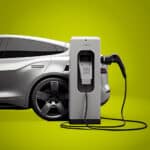Last month, hundreds of thousands of students around the globe walked out of school to speak up for their future and participate in Youth Strike 4 Climate. The actions of young people like Greta Thunberg and her peers around the world continue to spotlight our need for immediate action. This leadership from schoolchildren begs a follow-up question: can our schools—the institutions that shape and prepare our kids—help bring about a clean energy future as well?
Turns out the answer is an emphatic “yes”. In Generation 180’s hometown of Charlottesville, Virginia, students and parents are advocating for their school districts to advance the adoption of clean energy and energy efficiency. Generation 180 supported community members in a local campaign to advocate for a commitment from two school districts to take stronger climate action. These community members coordinated meetings with school district and municipal staff, drafted school board resolutions, collected petition signatures, and garnered community support. Students from first grade through high school came to school board meetings to share their reasons for wanting clean energy and climate action at their schools. As a result of their efforts, Albemarle County Public Schools passed a resolution last fall that committed to expand efforts to secure renewable energy systems and reduce greenhouse gas emissions from transportation. Last week, Charlottesville City Schools passed a resolution committing to increased energy performance, clean energy, and water conservation.

Where you come in
You may not have realized it yet, but you have the power to help your schools make the switch to clean energy. And you don’t need to be an energy expert: students, parents, teachers, and community members can all lead the charge. All you need is passion, dedication to make a difference in your community, and our newly published Solar Schools Campaign Toolkit.
The Solar Schools Campaign Toolkit is a step-by-step guide to running an effective solar campaign at your local schools. It includes a complete campaign roadmap, tips, template documents, case studies, and more. Co-written with our partner Climate Parents, it’s got everything necessary to empower you to be a champion for solar at your schools.
As schools across the country look to enhance learning, optimize financial resources, and protect the health of our children, it’s clear that solar energy is a solution that can help lead the way to a cleaner and brighter future. Switching to solar energy benefits schools, families, and communities.
Why schools?
Nationwide, schools are spending $8 billion a year on energy costs, their second-largest expense after personnel. There’s now a tremendous opportunity for schools to save money and to reinvest in students by switching to clean energy. The energy used by K-12 schools in the U.S. is responsible for as much carbon dioxide emissions as 18 coal-fired power plants, and we know that children are especially vulnerable to the health effects of air pollution. By transitioning to solar, schools can do their part to reduce harmful pollution and protect the health and well-being of their students.
Why now?
The cost of solar panels is one-third of what it was just 10 years ago, and solar power is now the fastest growing source of new energy globally. Driven largely by the drastically falling costs for solar power, the number of U.S. schools that have invested in solar has grown by approximately 50 percent since 2014.

What’s the opportunity?
The cumulative installed solar capacity at U.S. K-12 schools has grown more than a hundredfold during the past decade. Today, more than 5,500 schools nationwide are harnessing the power of the sun (check out our map to find schools near you). Yet despite this tremendous growth, only 5% of schools are taking advantage of the benefits of solar energy.
If every school in the country installed an average-sized school solar system, they would generate enough clean energy (37.8 gigawatts) to power 6.2 million homes. There is incredible potential to transform how we power our schools.
What does a solar schools campaign look like?
While every campaign is unique, we’ve created a roadmap to help you follow the four general phases that most campaigns take:

A successful solar schools campaign generally takes around 18 months from start to finish (from assembling your team to installation of a solar system), though this can vary greatly depending on all sorts of factors. We’ve written up case studies that showcase the variety of stakeholders, paths, and timelines that can lead to a successful end result: check out how a seventh grader led a successful campaign in Montana, how a science teacher in Michigan guided his students in their campaign to power their science department with solar, and how other exemplary districts across the country are making bold moves toward clean energy.
Powering schools with clean energy can have a positive ripple effect across the community: the visibility of solar on schools demonstrates the viability and affordability of clean energy solutions to local homeowners and businesses. Schools can be the catalysts for change to help drive us toward a cleaner, healthier future. What most school communities need to set them on the path to solar, however, is a spark. That’s where you come in.
















